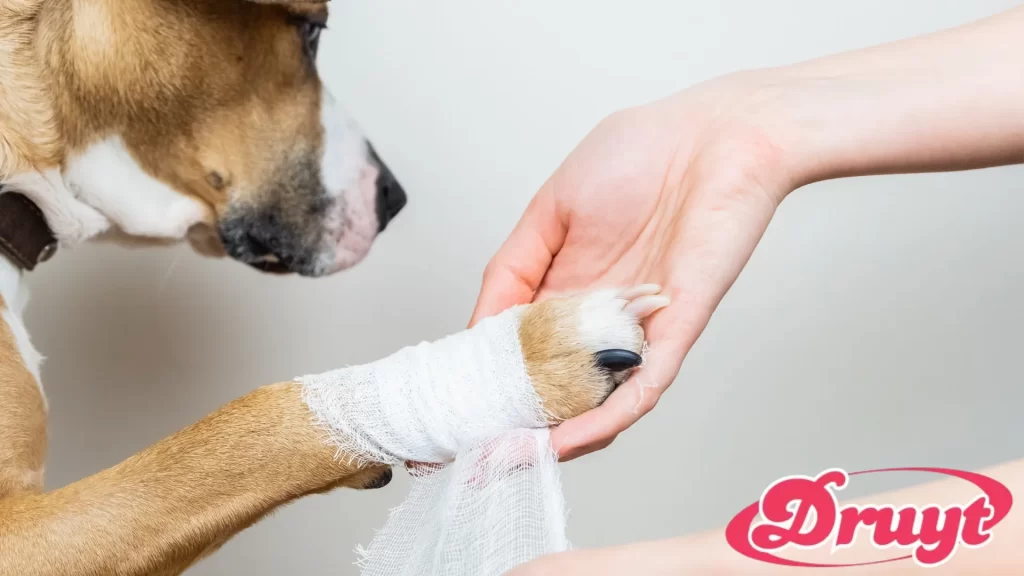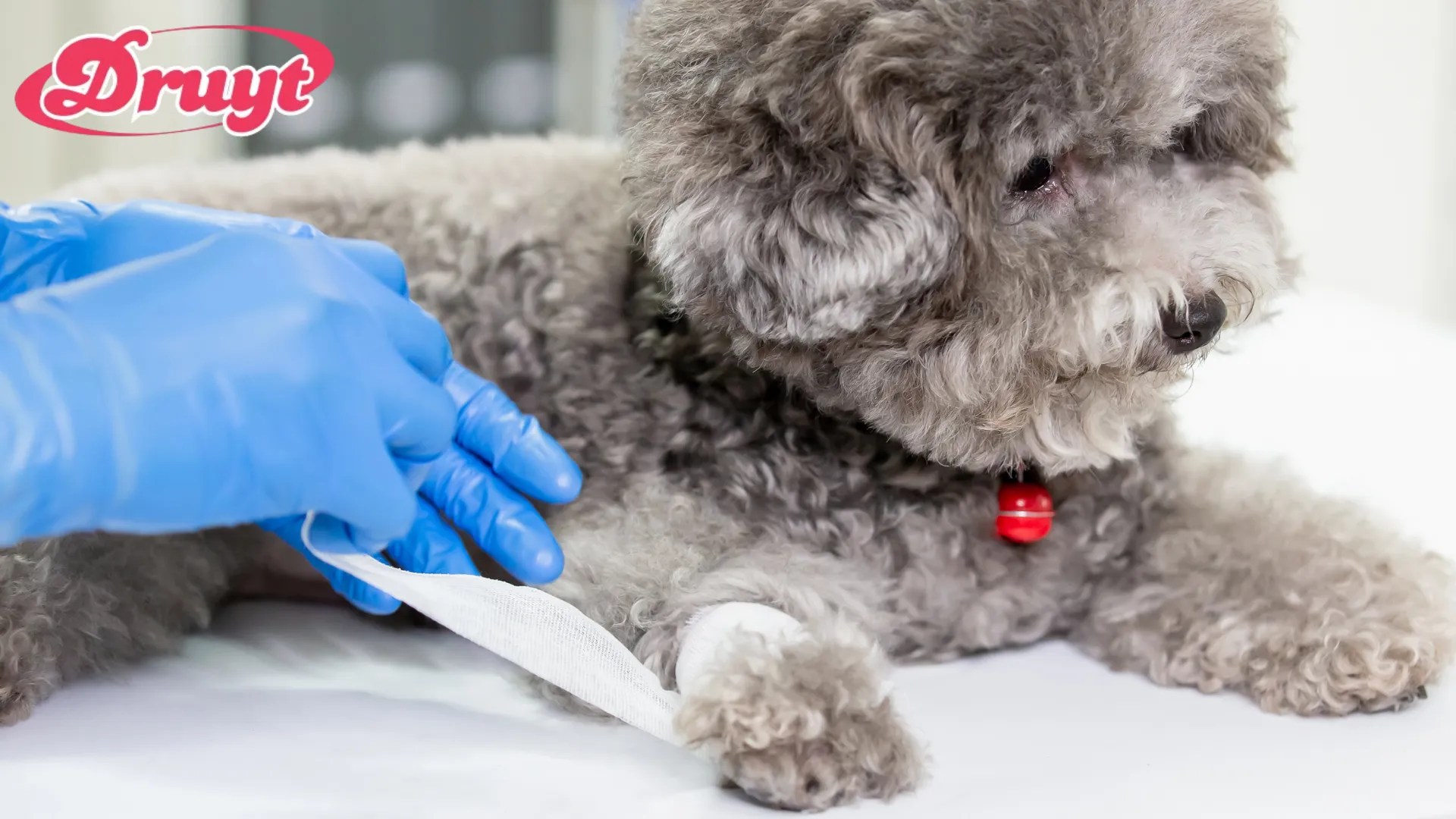Table of Contents
If your pup gets a small cut or scrape, your first thought might be to reach for the Neosporin in your medicine cabinet. After all, it works wonders for humans, but can you put Neosporin on a dog safely? Many pet owners wonder if this common ointment is suitable for their furry canine companions. In this article, we’ll dive into the surprising truth about using Neosporin on pups and share helpful tips to protect your little doggy.
What Is Neosporin?

Neosporin is an over-the-counter antibiotic ointment used to prevent infections in minor cuts and burns. It’s a popular choice for treating dog wounds, but can you put Neosporin on a dog without causing harm? While effective for humans, the answer isn’t so simple when it comes to our canine friends.
The use of Neosporin on dogs comes with some risks, especially if your pup likes to lick. We’ll explore these concerns below.
Also Read: Trendzguruji.me Health: Transform Your Well-being Today
Is Neosporin Safe for Dogs?
So, can you put Neosporin on a dog? Yes, but with caution. Neosporin is generally safe for minor cuts and scrapes, but it’s essential to use it correctly. Using too much Neosporin or leaving your little doggy unsupervised could lead to problems, such as allergic reactions or an upset stomach if the pup ingests the ointment.
Why You Should Be Careful
Dogs love to lick their wounds, and that’s where trouble can arise. Ingesting even small amounts of Neosporin might not cause serious harm, but if your pup does not stop licking, it could upset their stomach. To ensure your canine stays healthy, it’s best to monitor them after application.
Alternatives to Neosporin
Consider pet-specific alternatives like Polysporin or dog-safe wipes. These products are designed for animals, making them a safer option for your pup. For severe dog wounds, consult a veterinarian to determine if a stronger treatment is needed.
When Can You Put Neosporin on a Dog?
There are times when you can safely use Neosporin. It works best on minor canine skin cuts or scrapes, but if your pup suffers from dog bites or deeper wounds, it’s time to visit a veterinary expert for proper care.
How to Apply Neosporin Safely
Here’s a quick pet method for applying Neosporin to ensure your canine friend is safe:
- Clean the wound: Use warm water and mild soap to gently wash the area.
- Apply a thin layer: Use a small amount of Neosporin on the wound.
- Monitor your pup: Watch your pup closely to prevent licking.
- Cover the wound: If your pup does not stop licking, cover the area with a bandage.
Risks of Using Neosporin on Dogs

While Neosporin can be useful, it comes with some risks, especially for your canine companions. Let’s break down the potential dangers.
Allergic Reactions
Certain ingredients in Neosporin, such as bacitracin, may cause allergies. If your pup shows signs of swelling or redness, discontinue use and consult your veterinarian.
Toxicity from Ingestion
As mentioned earlier, licking can be a concern. If your pup ingests Neosporin, it may experience nausea or diarrhea. If symptoms persist, seek professional veterinary care.
Veterinary-Approved Alternatives
Using a veterinarian-approved product, such as antifungal chlorhexidine dog solution, might be safer for regular use. These products are designed specifically for animals, reducing the risk of adverse reactions.
Also Read: How Much Does a Plane Weigh? Uncover the Shocking Truth!
When You Should Avoid Using Neosporin
Can you put Neosporin on a dog in some cases? The answer is no. Neosporin is not suitable for serious injuries.
Deep Cuts and Puncture Wounds
If your canine companion has a deep wound, Neosporin won’t help. Instead, take your pup to a veterinarian for proper treatment. Deep wounds often require professional cleaning and veterinary care.
Eye or Ear Injuries
Avoid using Neosporin near your pup’s eyes, ears, or other sensitive areas. If your dog suffers from these types of injuries, seek professional veterinary care immediately.
Expert Advice: Safe Wound Care for Dogs
When caring for your dog’s minor injuries, it’s often better to use products specifically designed for pets rather than relying on Neosporin. Here are some safe, effective alternatives to ensure your dog heals quickly and safely:
- Vet-Approved Creams: Your veterinarian can recommend pet-safe creams that are tailored to treat wounds on canine skin. These creams are formulated to work specifically with animals and reduce the risk of allergic reactions or other side effects that human medications like Neosporin may cause.
- Antiseptic Wipes: Using dog-safe wipes is a convenient and gentle way to clean minor cuts or scrapes. These wipes are designed to disinfect the area without causing irritation or stinging, making them ideal for your pup.
- Saline Solution: A basic saline solution is another effective option for cleansing wounds. It helps remove dirt and debris without the harshness of chemicals, ensuring your dog’s wound stays clean without irritating their skin.
By choosing these pet-specific alternatives, you can provide better care for your pup while minimizing the risks that come with using products intended for humans. Always consult your veterinarian to ensure you’re using the best treatment for your canine friend.
Also Read: Is Neosporin Safe for Dogs? The Surprising Truth!
Pet Insurance and Wound Care
If you’re worried about the cost of treating your dog’s wounds, consider investing in a dog insurance policy from providers like MetLife Pet. Having pet insurance can make a big difference when unexpected injuries or treatments arise. It helps cover the cost of vet visits, medications, and even emergency care, reducing financial stress and ensuring your dog receives the best possible treatment. With a pet insurance policy, you won’t have to choose between your pup’s health and your budget. This safety net allows you to focus on what matters most—your dog’s recovery and well-being—while avoiding unexpected out-of-pocket expenses for professional veterinary care.
FAQs
Q: Can you put Neosporin on a dog’s cut?
A: Yes, but use it sparingly on small cuts.
Q: What happens if my dog licks Neosporin?
A: If your pup licks Neosporin, monitor them. Small amounts may cause stomach upset, but if symptoms worsen, consult your veterinarian.
Q: Is there a safer alternative to Neosporin for dogs?
A: Yes, Polysporin and other vet-approved products are safer options for dogs.1.
Q: Can Neosporin cause an allergic reaction in dogs?
A: Yes, some pups may have an allergy to Neosporin ingredients.
Q: Should I use Neosporin for deep wounds?
A: No, deep wounds require professional veterinary care.

